FUDO MYO-O
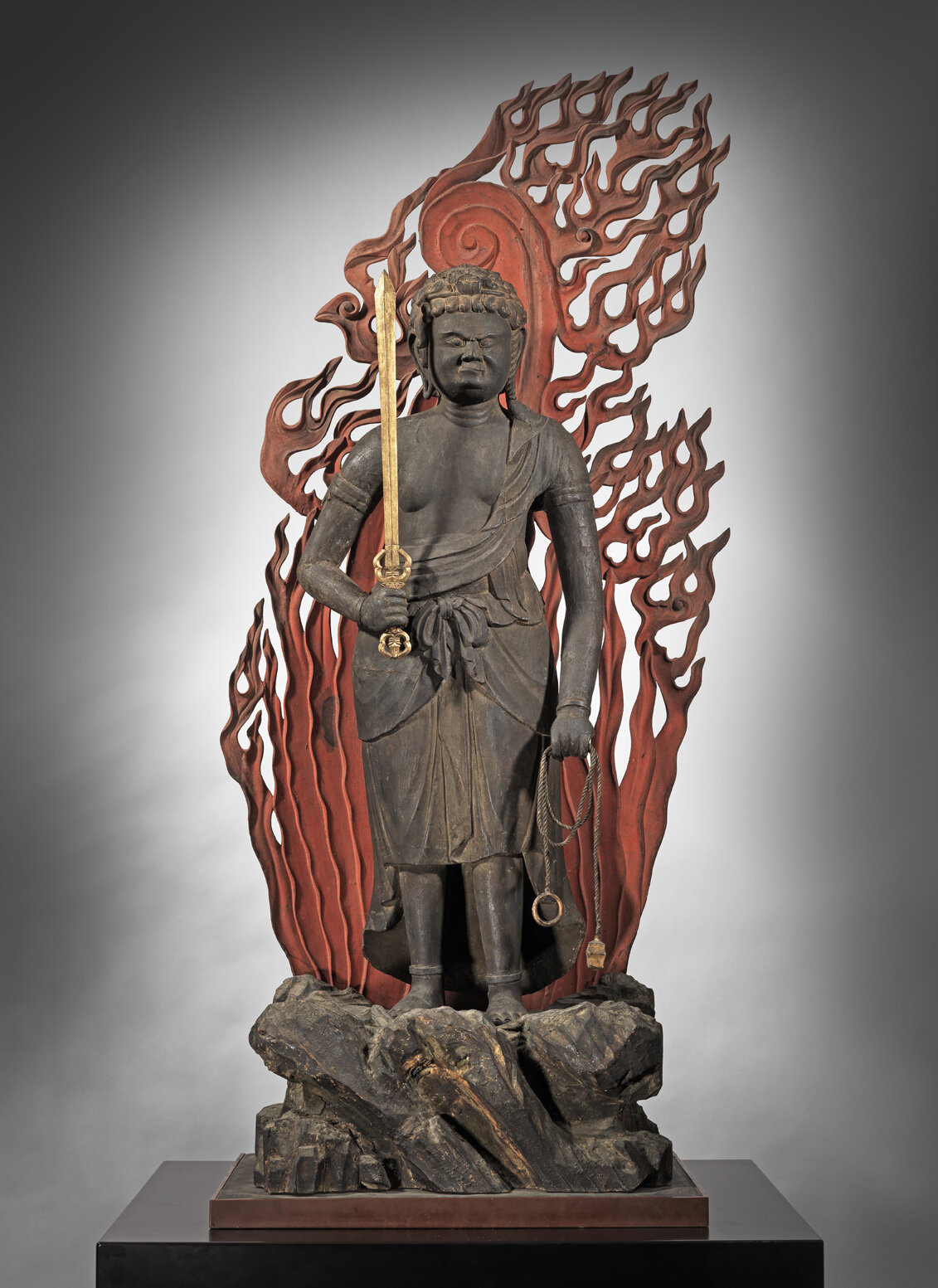

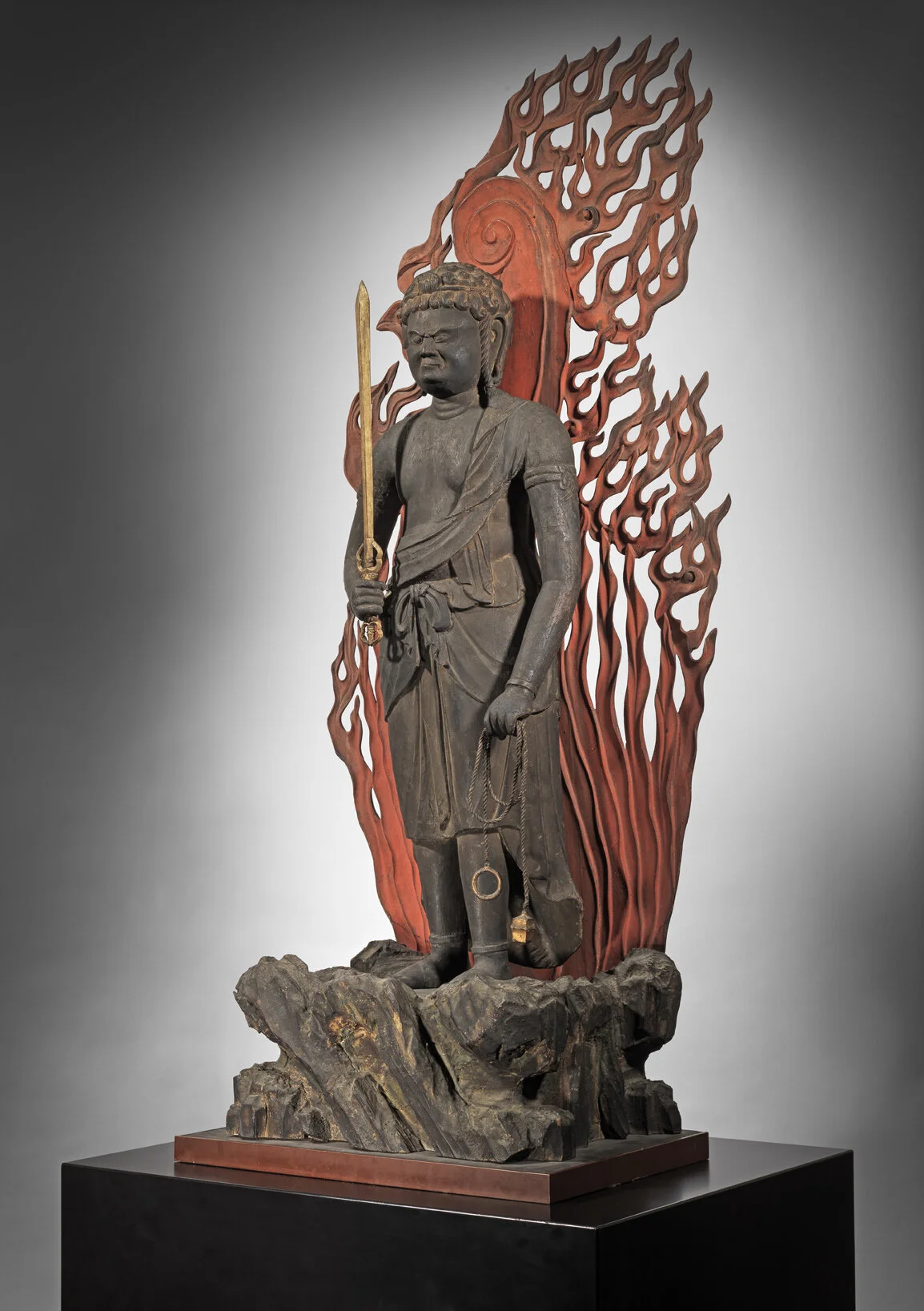

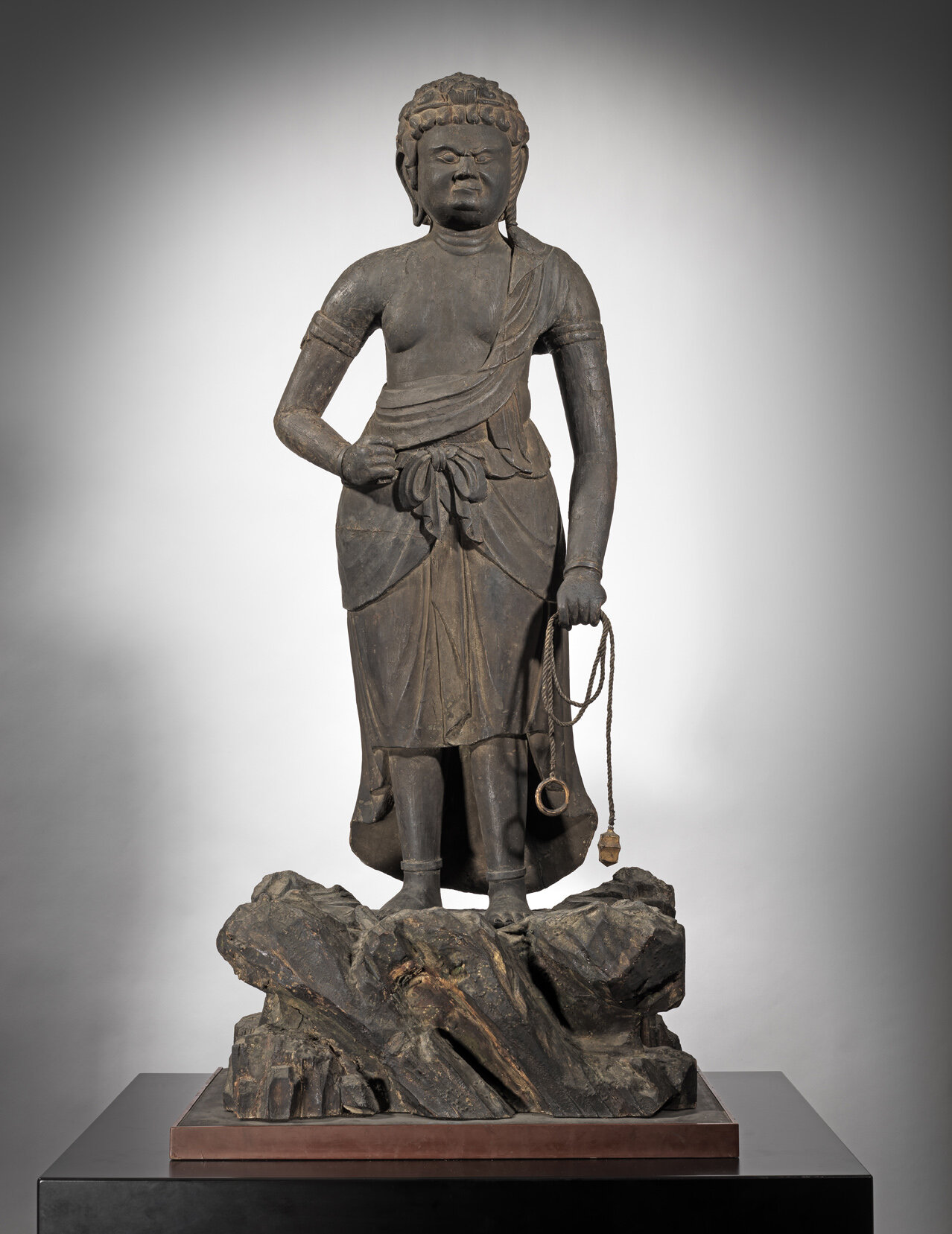
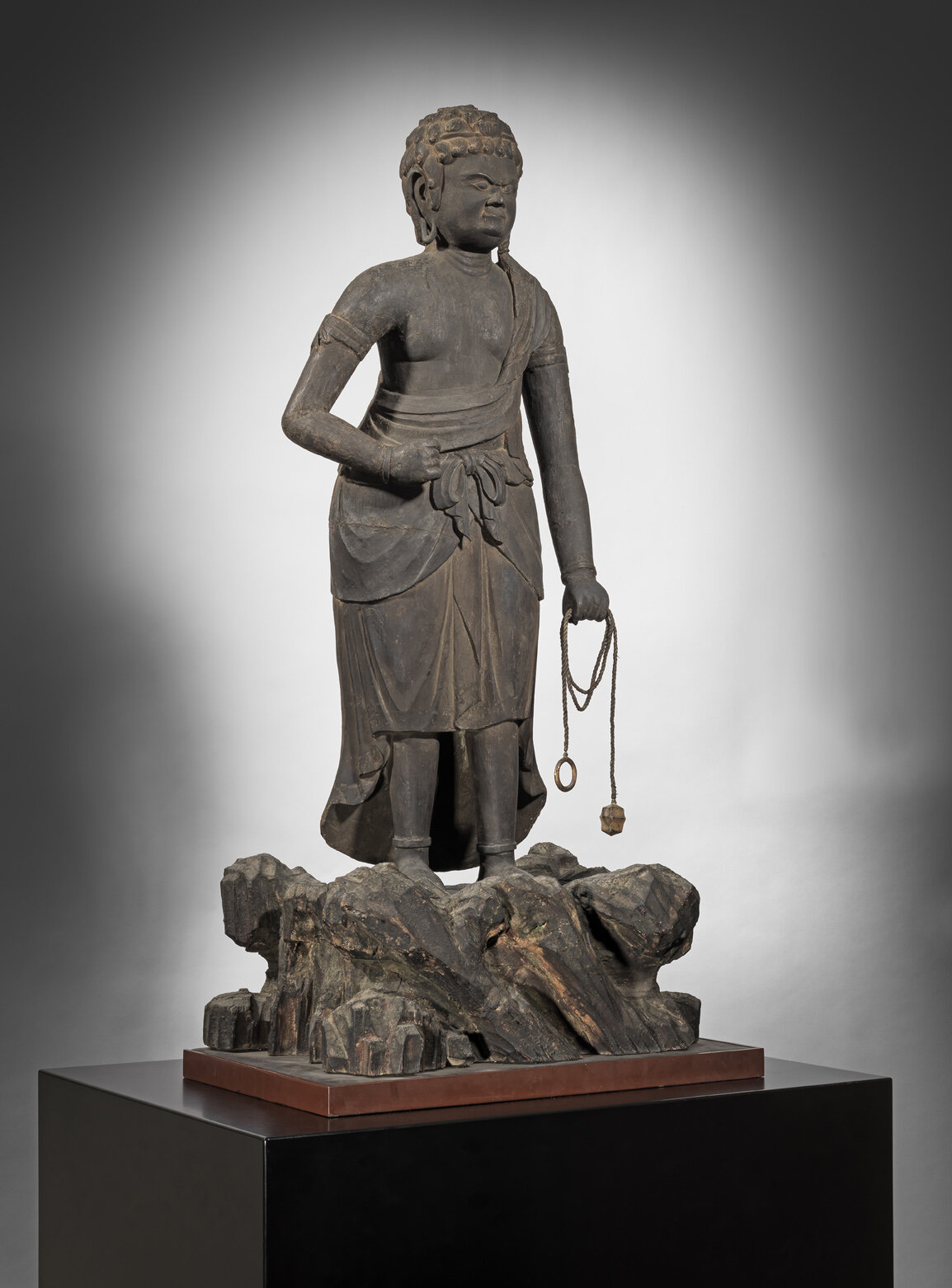
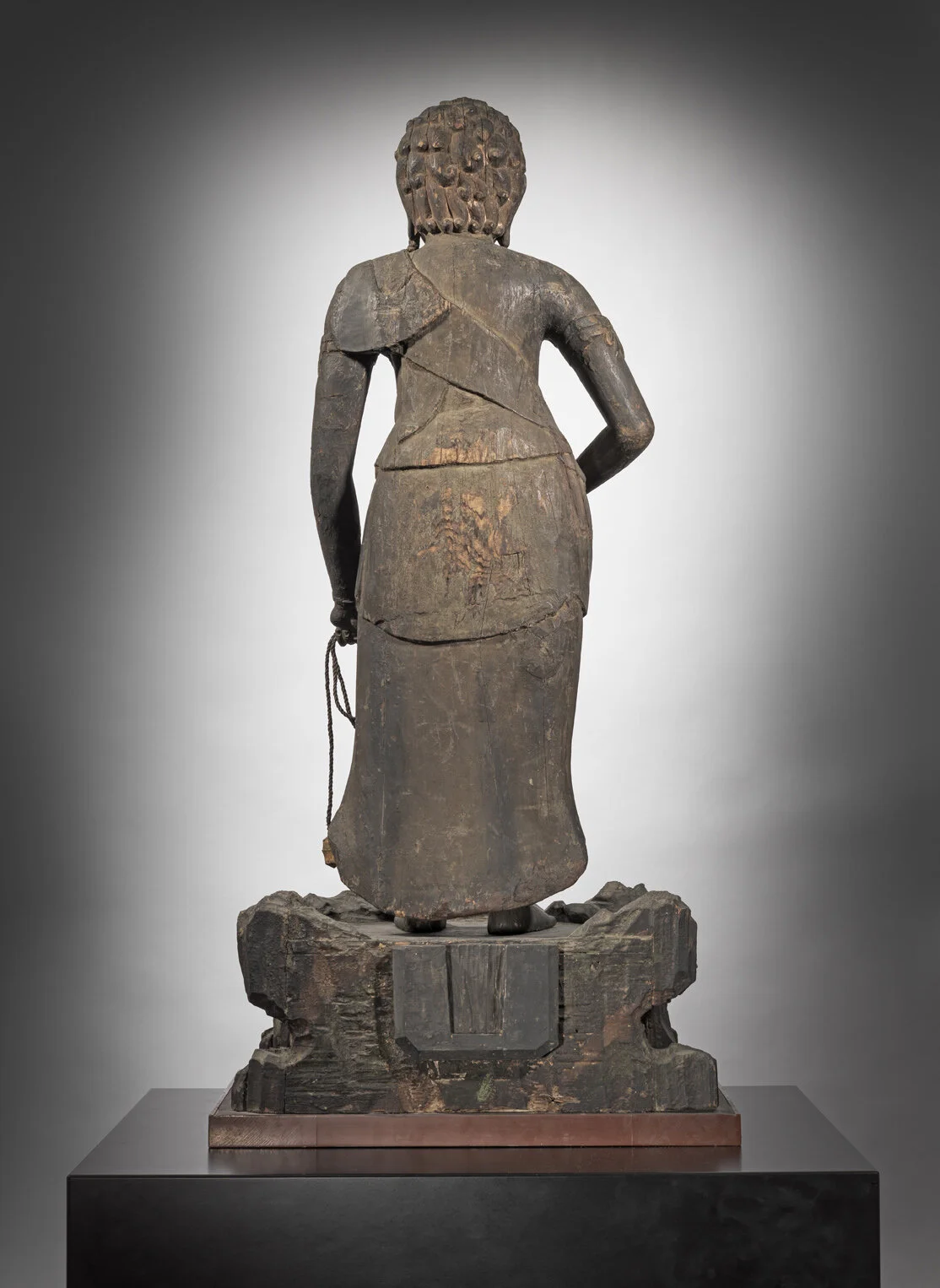
Late 10th to early 11th century, Heian period (794–1185).
Base, mandorla and accoutrements: Edo period (1603–1868).
Height of figure: 84 cm., 33 in.; overall: 127 cm., 50 in.
Kōsan-ji Temple, Ikuchijima island, Hiroshima prefecture, collection no. 18.
Fudō Myō-Ō, the Immovable, the Esoteric Wisdom King of Imperturbability (Sanskrit: Acala), is the indomitable protector of Shingon Buddhism, the guardian and militant defender of Buddha and his teachings. As one of the Five Esoteric Kings of the Womb Realm (Godai Myō-Ō) who collectively represent Buddha’s force against evil, Fudō commands the central power of the group as a direct manifestation of dainichi Nyorai, the principal Buddha of Shingon. Transmitted to Japan from Tang dynasty China (618–907) by the monk Kūkai (774–835), Fudō subsequently transcended his contemporaries to become an independent deity, his imagery to this day pervasively used in both painting and sculpture.
To guide followers to salvation, Fudō Myō-Ō uses his unyielding faith to battle the Three Poisons: greed, anger and ignorance. Facing all eventualities in a state of unshakeable calm, Fudō intends to both frighten off evil and assuredly steer people towards enlightenment by incinerating any impediments in their path with fire. Buddhist scriptures, such as Fudō jūkyū kan (The Nineteen Visualisations of Fudō) brought from China by Kūkai, were used as iconographic manuals, but the Heian period (794–1185) saw a great evolution in the imagery of Fudō Myō-Ō within Japan.
Predominantly a seated character in early Japanese sculpture, the late 10th century introduced new proportions for standing Fudō figures, with rigid, heavily set shoulders and limbs, aptly depicting the staunch character of the deity despite his avowedly childlike musculature. His imposing presence is accentuated by the bulky volume of his body, typical of ichiboku-zukuri, or single-block carving, with more delicately carved hands
and feet separately attached. Adhering to the essentials of early Fudō iconography, the figure holds in his right hand a vajra sword (kongō-ken) to pierce ignorance, and a rope to snare evil in his left; however, the undulating yet balanced contours of his costume are characteristic of 10th century developments. Also typical of the late Heian period are the sculpture’s small, centralised facial features, the near-disfigured nature of his squinting left eye and the two fangs protruding in opposite directions from his snarling mouth, up and down. While the long braid hanging to the left of Fudō Myō-Ō’s face embodies his traditional imagery, the tightly swirled knots of his hair only appear later in the Heian period; by adopting a servant’s hairstyle, he demonstrates his service and devotion to humanity. Enveloped by a flaming mandorla, Fudō stands resolutely on a large rock, exuding strength, authority and composure.
